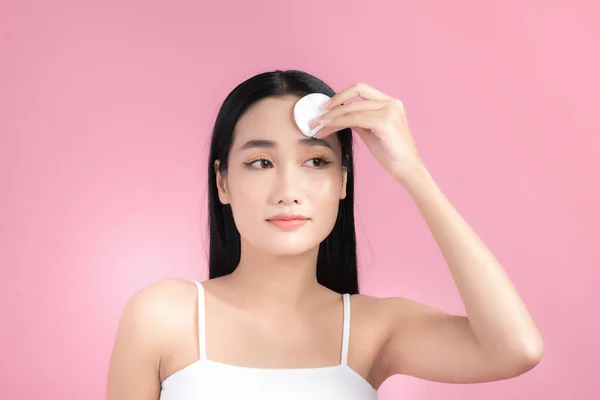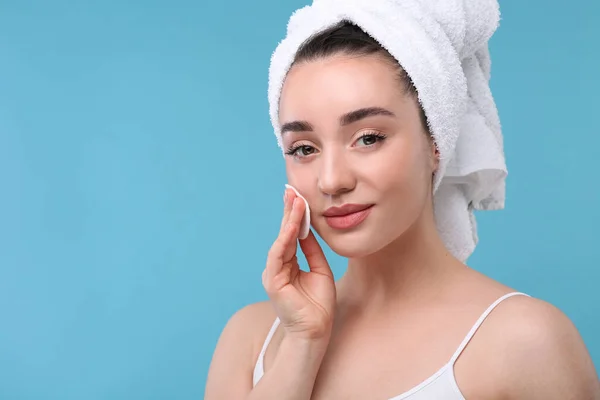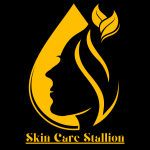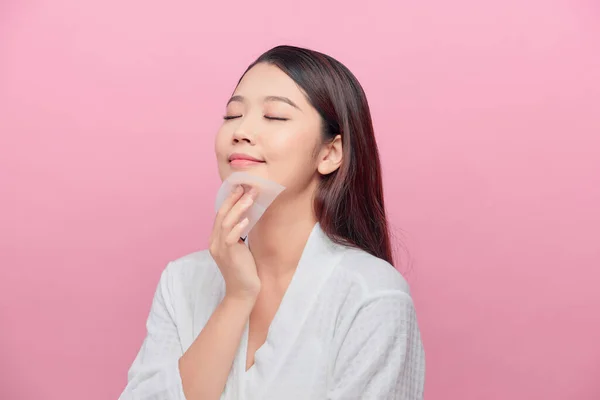What order to apply skincare: First, cleanse your face, then apply toner, followed by serum, moisturizer, and lastly, sunscreen.
In the vast universe of skincare, knowing the correct order to apply your products can be the difference between a glowing complexion and a lackluster one. Think of your skincare routine as a symphony where each product plays a vital role in harmony with the others.
Whether you’re a skincare novice or a seasoned aficionado, mastering the sequence from cleansers and serums to moisturizers and sunscreen not only maximizes the efficacy of each product but also transforms your regimen into a luxurious self-care ritual.
Dive into this guide and unlock the secrets to a flawless, radiant skin with the perfect order of application.

Table of Contents
ToggleWhat Order To Apply Skincare
To achieve the best results from your skincare routine, it’s crucial to apply products in the correct order. Start with cleansing, then apply toner, followed by serums, eye cream, treatments, moisturizer, and finally, sunscreen. This ensures each product can penetrate effectively and deliver maximum benefits.
Cleansing: The First Step to Clear Skin
Cleansing is the essential first step in any skincare routine. It removes dirt, oil, and makeup, prepping your skin for the next steps. Use a gentle cleanser suitable for your skin type. For oily skin, choose a foaming or gel cleanser.
For dry or sensitive skin, opt for a cream or hydrating cleanser. Proper cleansing helps prevent clogged pores and ensures that subsequent products work better.
Toning: Balancing Your Skin
Toner is the second step and is often overlooked. It helps remove any remaining impurities and balances your skin’s pH levels. Apply toner with a cotton pad or by patting it directly onto your skin.
Look for toners with ingredients like witch hazel for oily skin or hyaluronic acid for hydration. This step prepares your skin to absorb serums and moisturizers more effectively.
Serums: Targeted Treatment
Serums are concentrated formulations designed to address specific skin concerns such as wrinkles, dark spots, or hydration. Apply serum immediately after toning. Use a few drops and gently pat it into your skin.
Ingredients like vitamin C, retinol, and peptides are popular in serums. Serums should be used both morning and night for optimal results.
Eye Cream: Gentle Care for Delicate Skin
The skin around your eyes is thinner and more delicate. Eye cream can help with puffiness, dark circles, and fine lines. Apply eye cream using your ring finger to gently tap it around the orbital bone.
Look for ingredients like caffeine for puffiness or peptides for anti-aging. Consistent use can brighten and firm the eye area.
Treatments: Addressing Specific Issues
Treatments, such as acne spot treatments or masks, come next. These products are designed to address particular skin issues. Use treatments sparingly and only on affected areas.
This step can include exfoliants, which should be used a few times a week, or treatments like benzoyl peroxide or salicylic acid for acne-prone skin.
Moisturizing: Locking in Hydration
Moisturizer helps lock in all the previous layers and keeps your skin hydrated. Choose a moisturizer based on your skin type – lightweight gel formulas for oily skin, richer creams for dry skin.
Apply it evenly over your face and neck. Moisturizing is vital to maintain your skin’s barrier and prevent moisture loss.
Sunscreen: Protecting Your Skin
The final step in your morning skincare routine should always be sunscreen. Sunscreen protects your skin from harmful UV rays, preventing premature aging and skin cancer.
Apply a broad-spectrum sunscreen with at least SPF 30 as the last step. Reapply every two hours if you’re exposed to the sun. Even on cloudy days, UV rays can damage your skin.

Understanding Skin Types
Normal Skin
Normal skin is well-balanced, not too oily or dry. It has a smooth texture, small pores, and minimal blemishes. People often describe it as having a radiant complexion.
Dry Skin
Dry skin lacks sufficient moisture, resulting in a rough, flaky texture and tightness. It’s often described as “parched” or “dehydrated.”
Those with dry skin should focus on using gentle, hydrating cleansers and rich moisturizers. Avoiding harsh soaps and hot water helps maintain the skin’s natural oils.
Combination Skin
Combination skin features both oily and dry areas, often with an oily T-zone (forehead, nose, chin) and dry cheeks. Balancing this type can be challenging.
Common descriptors include “mixed skin” and “dual skin type.” Using different products for each area, such as light moisturizers for the T-zone and richer creams for dry areas, can help achieve balance.
Sensitive Skin
Sensitive skin reacts easily to products and environmental factors, often showing redness, itching, or burning. It’s described as “reactive” and “delicate.”
Those with sensitive skin should use hypoallergenic and fragrance-free products. A gentle skincare routine with minimal ingredients helps reduce irritation and maintain skin health.
Tailoring Routine to Skin Type
Tailoring a skincare routine to your skin type ensures optimal care and health. Identify your skin type and choose products that address specific needs.
For normal skin, maintain balance; for oily skin, control shine; for dry skin, boost hydration; for combination skin, balance the zones; and for sensitive skin, minimize irritation. Customizing your routine enhances skin appearance and function.
Basic Skincare Routine Steps
Morning Routine
Cleanser
Toner
Apply a toner to balance your skin’s pH and tighten pores. It also helps in removing any residual dirt and oil.
Serum
Use a serum rich in antioxidants or vitamins. Serums target specific skin concerns like hydration, brightening, or anti-aging.
Moisturizer
Hydrate your skin with a lightweight moisturizer. It locks in moisture and creates a smooth base for makeup.
Sunscreen
Finish with a broad-spectrum sunscreen to protect against UV rays. Sunscreen is crucial for preventing premature aging and skin cancer.
Evening Routine
Makeup Remover/Cleansing Oil
Start with a makeup remover or cleansing oil to dissolve makeup and impurities. This step ensures a thorough cleanse.
Cleanser
Follow with a gentle cleanser to deeply clean your skin. This removes any remaining traces of makeup and dirt.
Exfoliator (2-3 times a week)
Exfoliate to remove dead skin cells and promote cell turnover. Use an exfoliator 2-3 times a week for a smoother, brighter complexion.
Toner
Reapply toner to restore skin’s pH balance and prepare it for better absorption of subsequent products.
Serum
Apply a night serum to address specific skin needs like repair and hydration. Night serums are typically more concentrated.
Eye Cream
Use an eye cream to hydrate and treat the delicate skin around your eyes. This helps reduce puffiness and fine lines.
Moisturizer
Hydrate your skin with a rich moisturizer to lock in moisture and support overnight repair.
Face Oil
Seal in all the products with a nourishing face oil. Face oils add an extra layer of hydration and improve skin elasticity.

Detailed Breakdown of Each Step
Cleansing
Purpose
The primary goal of cleansing is to remove dirt, oil, and makeup. This step is essential for maintaining clear skin.
Types of Cleansers
Choose from gel, foam, cream, and oil-based cleansers. Each type suits different skin types and needs.
Application Technique
Apply the cleanser to damp skin. Massage gently in circular motions, then rinse thoroughly with lukewarm water.
Toning
Purpose
Toning helps balance the skin’s pH and prepares it for subsequent treatments.
Types of Toners
Opt for hydrating, exfoliating, or pH-balancing toners based on your skin’s requirements.
Application Technique
Apply toner with a cotton pad or by patting it directly onto the skin.
Serums
Purpose
Serums target specific skin concerns such as hydration and anti-aging.
Key Ingredients
Look for serums containing hyaluronic acid, vitamin C, and retinoids.
Application Technique
Dispense a few drops onto your fingertips and gently press onto the skin.
Moisturizing
Purpose
Moisturizers hydrate the skin and protect the skin barrier.
Types of Moisturizers
Gel, cream, and lotion forms cater to different skin needs and preferences.
Application Technique
Apply moisturizer to clean skin, using upward strokes to help absorption.
Sunscreen
Importance of Daily Use
Daily sunscreen use is crucial to protect skin from harmful UV rays.
Types
Choose between chemical and physical sunscreens based on your skin type and concerns.
Application Technique
Apply generously to all exposed skin areas, reapplying every two hours if necessary.
Makeup Removal
Purpose
Proper makeup removal ensures thorough cleansing and prevents pore clogging.
Types
Use micellar water or cleansing balm to effectively remove makeup.
Application Technique
Gently massage the remover onto the skin and wipe away with a cotton pad or rinse off.
Exfoliating
Purpose
Exfoliating removes dead skin cells and promotes cell turnover.
Types
Physical exfoliants use small particles, while chemical exfoliants (AHAs and BHAs) dissolve dead cells.
Application Frequency and Technique
Exfoliate 1-3 times a week, depending on skin sensitivity. Apply gently to avoid irritation.
Eye Cream
Purpose
Eye creams address issues like puffiness and dark circles around the eyes.
Key Ingredients
Caffeine and peptides are effective ingredients in eye creams.
Application Technique
Tap a small amount around the eye area with your ring finger for gentle application.
Face Oil
Purpose
Face oils seal in moisture and provide additional nutrients to the skin.
Types of Oils
Jojoba, rosehip, and argan oils are popular choices.
Application Technique
Warm a few drops between your hands and press onto the skin as the final step of your routine.

Special Considerations
Seasonal Adjustments
Seasonal changes impact skin health significantly. During winter, dry air can cause dehydration and flakiness, making it essential to use heavier moisturizers.
In summer, increased humidity and sun exposure necessitate lightweight, non-comedogenic sunscreens and hydrating serums. Spring and fall require transitional skincare routines that balance moisture and protection.
Adapt your skincare regimen with the seasons to maintain a healthy complexion year-round.
Age-specific Routines
Skincare needs evolve with age, requiring tailored routines for different life stages.
Teenagers
Teenage skin often struggles with excess oil and acne. A gentle cleanser, oil-free moisturizer, and salicylic acid treatments can help. Teens should also establish a habit of using sunscreen daily to prevent future damage.
20s and 30s
In your 20s and 30s, focus on preventing early signs of aging. Incorporate antioxidants like vitamin C and retinoids to boost collagen production and reduce fine lines. Maintain a consistent cleansing and moisturizing routine, and never skip sunscreen to protect against UV damage.
40s and Beyond
For those in their 40s and beyond, skin loses elasticity and hydration. Use richer creams with hyaluronic acid and peptides to combat dryness and sagging. Retinol can help with wrinkle reduction, and regular exfoliation can improve cell turnover. Prioritize hydration and protection to maintain skin vitality.
Dealing with Specific Skin Conditions
Managing specific skin conditions requires targeted treatments and products.
Acne
Acne-prone skin benefits from products containing benzoyl peroxide, salicylic acid, and niacinamide. Regular cleansing, non-comedogenic moisturizers, and spot treatments can control breakouts. Consistency is key to reducing acne and preventing scarring.
Rosacea
Rosacea requires gentle, soothing skincare. Avoid triggers like alcohol and spicy foods. Use products with calming ingredients like chamomile and aloe vera. Sunscreen is crucial, as UV exposure can worsen symptoms. Seek dermatologist advice for severe cases.
Eczema
Eczema-prone skin needs intensive hydration. Choose fragrance-free, hypoallergenic products with ingredients like ceramides and colloidal oatmeal. Avoid hot showers and harsh soaps. Regular moisturizing helps repair the skin barrier and reduce flare-ups. Consult a dermatologist for personalized treatment plans.
Common Mistakes in Skincare Application
Over-exfoliation
Over-exfoliation is a frequent skincare mistake. Many believe that more exfoliation leads to clearer skin, but it often results in irritation, redness, and breakouts. Exfoliating too often can damage the skin barrier, leading to sensitivity and increased susceptibility to environmental damage. Stick to exfoliating 2-3 times a week to maintain healthy skin.
Incorrect Product Layering
Incorrect product layering can diminish the effectiveness of your skincare routine. Apply products from thinnest to thickest consistency to ensure proper absorption.
Start with cleansers and toners, followed by serums and treatments, and finish with moisturizers and sunscreen. This method maximizes each product’s benefits and avoids pilling or decreased efficacy.
Skipping Sunscreen
Skipping sunscreen is one of the most detrimental skincare mistakes. Sunscreen protects against harmful UV rays that cause premature aging, sunburn, and skin cancer. Daily sunscreen application, even on cloudy days, is crucial. Use a broad-spectrum SPF of at least 30 and reapply every two hours when outdoors for optimal protection.
Using Expired Products
Using expired products can lead to skin irritation and infections. Expired skincare products lose their potency and can harbor bacteria. Check expiration dates regularly and replace old products. Proper storage in a cool, dry place can extend the shelf life of your skincare items, ensuring they remain effective and safe to use.
Tips for Maintaining an Effective Skincare Routine
Consistency is Key
Consistency is crucial for an effective skincare routine. Regular use of skincare products ensures optimal results. Follow a daily regimen to maintain healthy skin. Skipping days can hinder progress. Consistent application of cleansers, moisturizers, and sunscreens is essential.
Patch Testing New Products
Patch testing is vital when introducing new skincare products. Apply a small amount on your forearm to check for reactions. Wait 24-48 hours to observe any adverse effects. This step helps avoid allergic reactions and skin irritation. Always patch test before fully incorporating a new product.
Monitoring Skin’s Response to Products
Monitor your skin’s response to different products. Keep track of any changes in texture, tone, or breakouts. Noticing how your skin reacts helps refine your routine. If a product causes irritation, discontinue use. Regularly assessing your skin’s health ensures a tailored and effective regimen.
Adjusting Routine as Needed
Adjust your skincare routine based on your skin’s needs. Skin can change due to weather, diet, or stress. Modify your regimen accordingly to address these changes. Incorporate hydrating products in winter and lighter formulations in summer. Flexibility in your routine maintains skin balance and health.

FAQs
Why is the order of applying skincare products important?
The order of applying skincare products is crucial because it ensures that each product can penetrate the skin and perform its intended function effectively. Applying products in the wrong order can hinder absorption and reduce the efficacy of your skincare routine.
What is the correct order to apply skincare products?
A general guideline for the order of applying skincare products is as follows:
Cleanser
To remove dirt, oil, and makeup.
Toner
To balance the skin’s pH and prepare it for better absorption of subsequent products.
Serum
To deliver concentrated active ingredients to the skin.
Eye Cream
To target delicate under-eye areas.
Moisturizer
To hydrate and lock in moisture.
Sunscreen (morning only)
To protect the skin from UV damage.
Should I wait between applying different skincare products?
Yes, it’s beneficial to wait a few minutes between applying each product to allow them to absorb properly. For example, wait until your toner is fully absorbed before applying serum, and similarly, let your serum absorb before applying moisturizer.
Can I mix my skincare products together to save time?
It’s not recommended to mix skincare products as this can affect their effectiveness and stability. Layering products in the correct order ensures each one works as intended.
How do I incorporate exfoliants into my skincare routine?
Exfoliants should be used after cleansing but before toning. They help remove dead skin cells and improve the absorption of other skincare products. However, exfoliants should not be used daily 1-3 times per week is usually sufficient, depending on your skin type.
What if I use prescription skincare products?
Prescription products should be applied as directed by your dermatologist, typically after cleansing and before other treatments like serums and moisturizers. Consult with your dermatologist for specific instructions tailored to your skincare needs.
Do I need to apply sunscreen if my moisturizer already has SPF?
While using a moisturizer with SPF is better than no protection at all, dedicated sunscreens usually offer more comprehensive and reliable protection. For optimal protection, apply a broad-spectrum sunscreen as the final step in your morning skincare routine.
Can I use the same products for my morning and evening skincare routine?
Some products can be used both morning and night, such as cleansers and moisturizers. However, treatments containing retinoids, for example, are typically used only at night due to their sensitivity to sunlight. Conversely, sunscreen is only necessary in the morning.
How do I know which products are suitable for my skin type?
Understanding your skin type whether it’s oily, dry, combination, or sensitive is key to selecting the right products. Look for labels and formulations specifically designed for your skin type. Consulting with a dermatologist can also provide personalized recommendations.
Is it necessary to use all these steps in my skincare routine?
No, a basic skincare routine can be effective with just three steps: cleansing, moisturizing, and applying sunscreen (in the morning). Additional steps like toning, using serums, and eye creams can be added based on your specific skincare goals and concerns.
Conclusion
In conclusion, establishing the correct order to apply skincare products is essential for maximizing their effectiveness and ensuring optimal skin health.
The recommended sequence starting with cleansing, followed by toning, applying serums and treatments, moisturizing, and finishing with sunscreen ensures that each product can perform its specific function without interference.
Cleansing sets the stage by removing impurities, toning balances the skin’s pH, serums and treatments deliver active ingredients deeply, moisturizers lock in hydration, and sunscreen provides crucial protection from harmful UV rays.
By adhering to this order, you can create a cohesive and efficient skincare routine that addresses your skin’s unique needs and promotes a radiant, healthy complexion.

